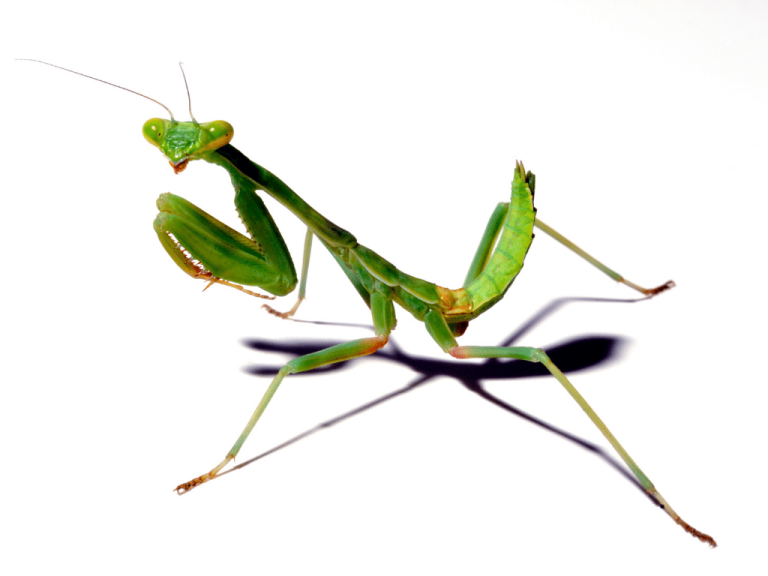The mantis is a relatively large insect that lives among plants, with a body color almost identical to green vegetation. It is a long-necked insect (with an elongated prothorax) that is unlike any other insect. It has a neck topped with a head that can rotate in any direction, and a pair of multi-segmented or thread-like antennae. It often uses its two pairs of hind legs to land on plants. Its front legs are long and held up in front of its chest like praying hands, which is why Europeans named it the “praying insect.” However, this dignified posture is actually a preparation for hunting.
The mantis is a carnivorous beneficial insect. Its front legs are equipped with two rows of sharp serrations, allowing it to catch many pests such as flies, moths, butterflies, grasshoppers, and locusts that harm cotton, grains, and vegetables. It is a formidable pest eliminator; no active pest can escape its powerful front legs, which are aptly called “raptorial legs.”
The instinct to prey on pests is present in adult mantises as well as nymphs. Even when they first hatch from their eggs and are small in size, they can already catch tiny insects like mosquitoes. As they grow, they can catch lively flies, moths, and their favorite prey, cicadas—the musicians of the insect world. Even the champion runners and jumpers of the insect world, the locusts, often become their meals. There is a species called the flower mantis that is particularly adept at catching prey. It lies in wait on leaves or among flowers, disguising its first pair of legs to look like flower petals, resembling an open purple-white orchid. This deception leads some insects to mistake it for a real flower and fly towards it to collect nectar, only to fall into its trap.
The mantis is indeed a beneficial insect, helping humans by eliminating many pests. Some countries even collect their egg cases, store them over winter, and release them in pest-infested areas in the spring.
The benefits mantises provide to humans extend beyond pest control; their egg cases also have medicinal uses. The egg case is formed in autumn from a foam-like substance secreted by the female mantis’s abdomen, which solidifies into a casing (called ootheca) and contains the eggs. In France, the egg case is considered a miraculous remedy for frostbite. Locals split it open, squeeze out the juice, and apply it to the affected area, claiming it works wonders. It is also reputed to be effective for toothache relief.

